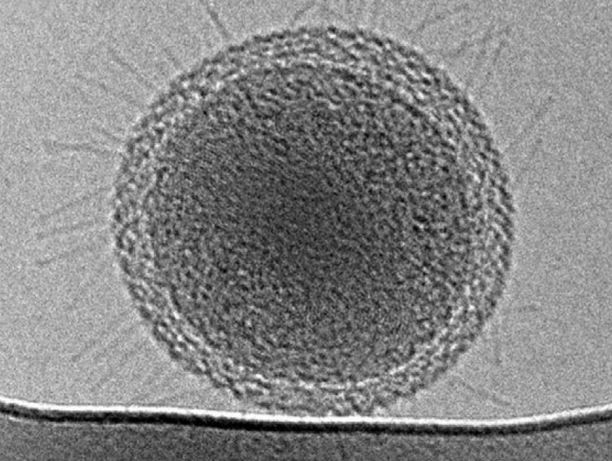Scientists have taken the first detailed microscopy images of ultra-small bacteria that are believed to be about as small as life can get.
This is the smallest a cell can be and still accommodate enough material to sustain life.
The existence of ultra-small bacteria has been debated for two decades, but there hasn't been a comprehensive electron microscopy and DNA-based description of the microbes until now.
Scientists said the cells in the photo has an average volume of 0.009 cubic microns (one micron is one millionth of a meter). About 150 of these bacteria could fit inside an Escherichia coli cell and more than 150,000 cells could fit onto the tip of a human hair.
The research was led by scientists from the U.S. Department of Energy's Lawrence Berkeley National Laboratory and the University of California, Berkeley. The scientists reported their findings in the journal, Nature Communications.
What's surprising is these diverse bacteria were found in groundwater and are thought to be quite common. The bacteria are also quite odd, which isn't surprising since the cells are close to and in some cases smaller than several estimates for the lower size limit of life.
The bacterial cells have densely packed spirals that are probably DNA. They also have hair-like appendages, a very small number of ribosomes and a stripped-down metabolism that likely requires them to rely on other bacteria to ensure their existence.
The bacteria are from three microbial phyla that are poorly understood. Learning more about the organisms from these phyla could shed light on the role of microbes in the planet's climate, our food and water supply, and other key processes.
"These newly described ultra-small bacteria are an example of a subset of the microbial life on earth that we know almost nothing about. They're enigmatic. These bacteria are detected in many environments and they probably play important roles in microbial communities and ecosystems. But we don't yet fully understand what these ultra-small bacteria do," said Jill Banfield to The Huffington Post.
Banfield is a Senior Faculty Scientist in Berkeley Lab's Earth Sciences Division and a UC Berkeley professor in the departments of Earth and Planetary Science and Environmental Science, Policy and Management.



























